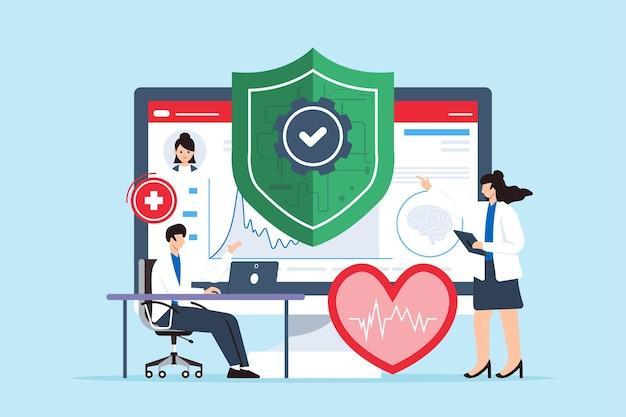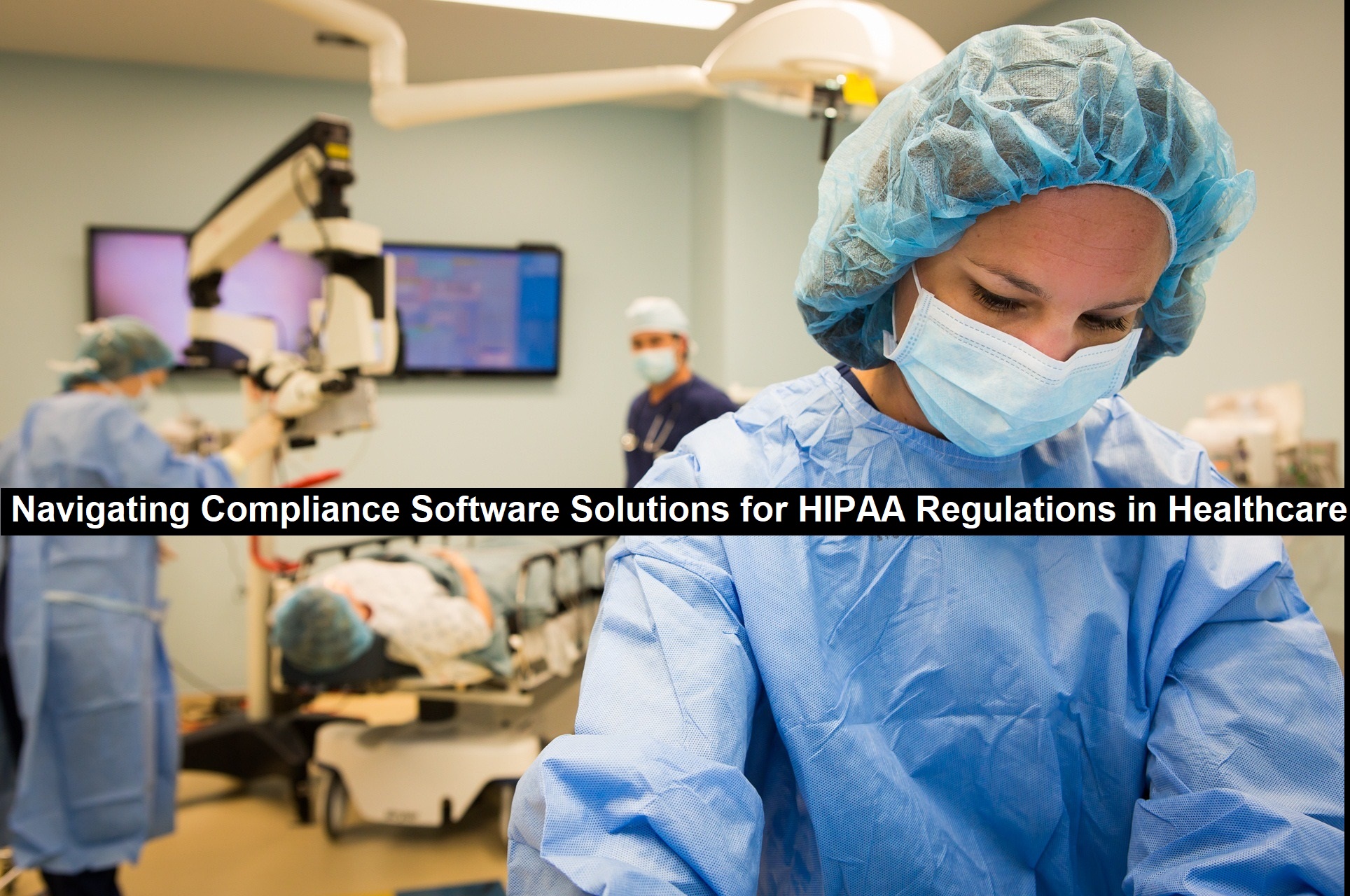Navigating Compliance: Software Solutions for HIPAA Regulations in Healthcare
HIPAA plays an important role now more than ever, especially in this ever evolving healthcare sector. HIPAA continues to be a crucial regulatory body for those in the healthcare sector, and technology brings it closer to primary practice that finding ways of undertakings it through software solutions becomes relevant. In this article, focuses on determining the basic principles of HIPAA and discussing which software products can aid in meeting these obligatory standards.
Introduction to HIPAA Compliance in Healthcare
In order to safeguard sensitive health information and preserve patient privacy, HIPAA was passed in 1996. Any entity handling protected health information (PHI), including insurance companies and healthcare providers, must comply with HIPAA. Heavy fines and reputational harm may follow noncompliance. Software solutions are essential to attaining and preserving HIPAA compliance as healthcare becomes more digital.

Key HIPAA Requirements for Software Solutions
1. Privacy Rule
The Privacy Rule under the HIPAA requires that the PHI is protected and any access to the information only granted to those who have permission. Access controls have to be fitted in software solutions to safeguard sensitive information.
2. Security Rule
According to the Security Rule, covered organizations must use technological, administrative, and physical security measures to protect electronic PHI (ePHI). This entails putting audit controls, secure user authentication, and encryption into practice.
3. Breach Notification Rule
While implementing data protection and privacy on the use of EHR, healthcare organizations must inform individuals of a breach of their information and the Department of Health and Human Services (HHS). Breach detection and reporting solutions ought to be integrated into software solutions so they can help organizations meet this rule.
4. Transaction and Code Sets Rule
This rule governs all electronic submission of claims for healthcare services, as well as all payments for those services. To optimize such processes and maintain compliance, the software solutions used must endorse such formats.
Read: Sleep: The Missing Ingredient in your Summer Bulk
Challenges of HIPAA Compliance for Healthcare Providers
1. Complex Regulations
HIPAA rules are stringent, and understanding them can be very difficult for any healthcare facility. Compliance can be understood, confusing and complex and demanding strict compliance with legal requirements can be daunting to organizations especially those that are small in size.
2. Data Security Threats
By raising the issue of the continually rising cyber threats, the risks that affect healthcare systems are fostered. IT providers have to ensure that its software is capable of protecting itself against likely invasions of privacy and remain legal.
3. Cost of Compliance
HIPAA-compliant software can prove expensive, especially for the small healthcare organization. One major concern that major on compliance is and this is tackling the issue of working with limited funds.
4. Ongoing Training and Awareness
Healthcare workers should be fully trained to know the HIPAA regulation and the significance of data protection. Essentials of training include frequent training but they may call for ample resources.
Features of HIPAA-Compliant Software Solutions
1. Data Encryption
To maintain HIPAA compliancy, Hippa compliant software solutions must ensure the data being stored is both encrypted and secured during transit. This ensures that such information is safe from areas to which it has no business being in: from being intercepted mid-transmission or ensconced in a database. HIPAA compliance also results from the use of strong encryption protocols as well as protect ePHI from the risk of breaches that could cost a lot of money.
2. User Access Controls
The role-based access control measures are the best when it comes to ensuring security of ePHI. This strategy limits the usage of the data by determining the areas within the business that the patient can access or alter depending on his or her position in the company. When there are fewer agents possessing ePHI, chances of external or internal unauthorized access to such information is curtailed hence enhanced on compliance levels.
3. Audit Trails
Security controls such as audit trails that inform an organization on access to the ePHI, as well as tracking changes made to the information will be important. These logs give details of who has been accessing the data, and more significantly, what changes were made the time at which the actions were made. Through the use of audit trails, an organization can easily identify any breaches or any forms of malicious activities hence improve on their compose when addressing HIPAA.
4. Data Backup and Recovery
Backup data and safe data recovery are essential aspects that must be including in compliance with HIPAA software. They safeguard records from loss by ruined hardware, cyber invasion, or other catastrophes making certain that patients’ data is safe and retrievable. Data back up and recovery not only assist in compliance but also assist in establishing business continuance which aids health care facilities to continue treatment and care to their patients.Backup data and safe data recovery are essential aspects that must be including in compliance with HIPAA software. They safeguard records from loss by ruined hardware, cyber invasion, or other catastrophes making certain that patients’ data is safe and retrievable. Data back up and recovery not only assist in compliance but also assist in establishing business continuance which aids health care facilities to continue treatment and care to their patients.
5. Compliance Reporting
Functionality for software support should be the reporting feature that allows tracking or proving HIPAA compliance. It argues that these reports can be useful in understanding how the organisation is fairing on issues to do with privacy and security hence enabling the organisation to prepare well for audits and assessments. In this case, the healthcare organisation would get a review of the various regulations together with the corresponding compliance records, thus helping to identify where on-going adjustments are required which would help to enhance the protection of patients’ data.
Popular HIPAA-Compliant Software Solutions
1. Epic Systems
Epic is one of the most popular EHR solutions with rich HIPAA compliant options such as messaging and patients’ information management.
2. Athenahealth
Athenahealth uses a web based electronic health record solution that has inherent HIPAA features such as data encryption and secure billing methods.
3. Cerner
Some of the built-in functionalities in Cerner’s EHR software are the functionalities that aim at fulfilling the aspects of HIPAA.
4. Practice Fusion
Practice Fusion is a cloud-based free EHR system with HiPAA compliant features which plays a strong suit for small practices and clinics.
5. Kareo
Kareo hosts its solutions on the cloud and has HIPAA security features as well as resource centers to help the medical practices stay HIPAA compliant.
Choosing the Right Software for HIPAA Compliance
When selecting HIPAA-compliant software, healthcare organizations should consider several factors:
1. Evaluate Features
Make certain the software has basic components of HIPAA compliance including encryption, access control and audit trail.
2. Check Vendor Credentials
Use vendors that have shown their capability to work within the healthcare compliance requirements. Customer feedback, references or testimonials and or case studies should be used confirm their level of compliance with the agreed security standards.
3. Scalability
Ensure that the software being selected have potential in growing with the organization that you work for. This means that with increasing patient numbers and hence data volumes your software solution must be scalable at no additional cost to compliance standards.
4. User Experience
An intuitive user interface can enhance staff compliance and reduce training time. Choose software that is user-friendly and minimizes disruption to existing workflows.
Best Practices for Implementing HIPAA-Compliant Software
1. Conduct a Risk Assessment
To find potential weaknesses and make sure the chosen software takes these issues into account, conduct a thorough risk assessment.
2. Establish Policies and Procedures
Establish precise guidelines and protocols that specify how to use the program in accordance with HIPAA rules. Protocols for sharing and gaining access to ePHI are part of this.
3. Provide Ongoing Training
It is recommended to get different training sessions for HIPAA and the usage of particular software for the staff. This makes all to and on the lookout for security measures that need to be put in place.
4. Monitor and Audit Usage
By increasing the surveillance of software use and making assessments now and then, you can tell those who are not compliant. It was seen beneficial to sort assessed learner attributes to effectively detect areas of strength and weakness.
5. Stay Updated on Regulations
HIPAA regulation change may occur in the future and therefore, it is important to be acquainted with one’s changes. Eliminate the idea of end-of-year compliance and instead constantly review your compliance processes and tweak your software solutions.
Conclusion
Navigating HIPAA compliance in healthcare is a multifaceted challenge, but the right healthcare software development can significantly streamline this process. Healthcare providers can improve operational efficiency and safeguard sensitive patient data by comprehending HIPAA regulations, resolving compliance issues, and putting best practices into effect. As technology develops, protecting patient privacy and preserving faith in the healthcare system will continue to depend on being up to date on compliance and utilizing HIPAA-compliant software. Investing in dependable software solutions is not only a regulatory need but also a commitment to providing high-quality care and earning patients’ trust in an era where patient data protection is crucial.

